Brussels is not only the amazingly vibrant capital of Belgium, it’s actually the historic, political, cultural, and gastronomic epicenter of Europe, for that matter. Breathtakingly beautiful historic architecture, fantastic museums, mighty street art, powerful international organizations, and last but not least beer, fries, and chocolate: This cosmopolitan city truly holds something for each and every one in store.
Therefore, it was quite a challenge to put together a list of just the very best things to do on a visit to Brussels.
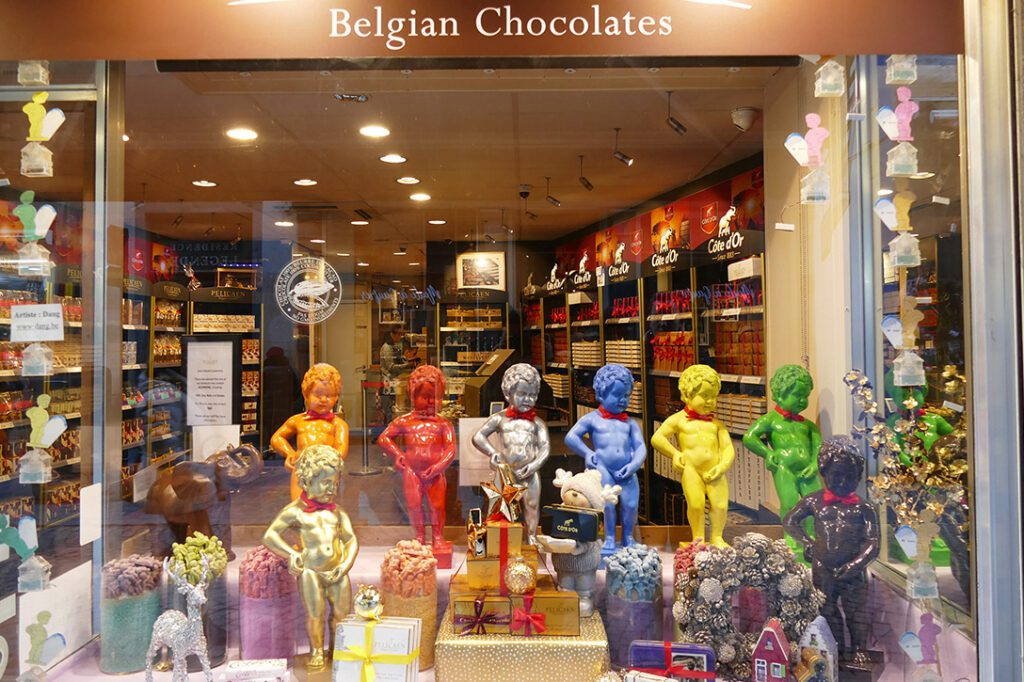
If it hadn’t been for my daughter studying in Brussels, it probably wouldn’t have come to my mind to visit Belgium’s capital. Or Belgium at all, for that matter.
But Christmas came and families and loved ones were expected to get together. So I packed a couple of warm sweaters, threw in some fun presents, and hopped on the late flight to Brussels.
Just to find out that this European capital with all its old architecture and new street art, its pralines and beers, surrealist art, and political reality is not only for me but for everyone.
- Belgium
- Brussels is for…
- …Architects and Artists: On Grand Architecture and Splendid Art Museums
- …Children and Childish: On Comics
- …Gourmands and Gourmets: On Food and Drinks
- …Hipsters and Hoodrats: On Streetart and Cool Neighborhoods.
- …Parliamentarians and Royalists: On the EU Quarter and the Belgian Royals
- …Surrealists and Humanists: On René Magritte and Erasmus' Heritage
- …Wandering and Wondering: On Greeneries and a World-Famous Structure
- Practical Information
- Map
- Pinnable Pictures
Belgium
Belgium is a really outstanding country. Although it only has a size of 30.528 km, they manage to squeeze almost 11,5 million Belgians in. This makes it Europe’s third most densely populated country – after Malta and the Netherlands.
In addition, these crunched Belgians have to communicate in three different languages. In Dutch in the northern part of the country called Flandern, in French in the southern Wallonia region. And finally, there is a small German part at the German border.

What many people don’t know is that Belgium is a federal hereditary monarchy. However, their King Philippe, enthroned in 2013, is practically never seen in the international tabloids.
Maybe that’s also because Belgium is so Über-European. Centrally located between the Netherlands, Germany, Luxemburg, and France, it is the epitome of the continent.
The Cradle of the European Union
Belgium has traditionally been opening up to its European neighbors. Two-thirds of the population is pro-EU which is more than in most other countries where the quota is around 50 percent.

The country plays an important and active role in the Benelux Union as well as in the European Union, the Council of Europe, the European Monetary Union, NATO, and the Common Foreign and Security Policy CFSP. Belgium supported all these organizations as one of their founding members.
Hence, it’s actually embarrassing having neglected this amazing country and outstanding capital city for so long. I guess it’s somehow in the eye of the hurricane and therefore, totally underrated. But once you start exploring the city and enjoying all it has to offer, I’m sure you’ll become a regular visitor. At least for me, my first time in Brussels was definitely not the last one!
In this post, however, I’ll prove that exciting Brussels has something amazing in store for each and every one of you!
Brussels is for…
…Architects and Artists: On Grand Architecture and Splendid Art Museums
Brussels Central: This train station is one of three principal railway stations in the city, centrally located, and therefore the perfect spot to start a tour through Brussels.
North of the station stands the architectonic jewel that is the Cathedral of St. Michael and St. Gudula. It is the main church of the city and the seat of the Archbishop. Construction of the current structure was begun in 1226 and completed at the end of the 15th century in the Gothic style. Similar to many French and English cathedrals, the towers have no pointy spires. Instead, two massive stair towers at the side corners frame the western facade.

As you walk from the cathedral westwards, you’ll get to the lovely Place de l’Agora. It is surrounded by small specialty stores and many eateries. Most importantly, you’ll find one of the entrances into the glorious Galeries Royales Saint-Hubert here.
The Galeries Royales Saint-Hubert is a shopping arcade that opened in 1847 which makes it the oldest passage in Europe, followed by Saint Petersburg and the Galleria Vittorio Emanuele II in Milan, which were completed in 1848 and 1867, respectively.

The 213-meter-long structure is designed in an Italian Cinquecento style. It consists of a long corridor with two upper floors under a slightly curved glass roof in a cast iron frame. Pilasters separate the windows of individual shops. The entire structure. The facade shows the motto Omnibus Omnia, hence, everything for everyone. If you look at the prices in the luxury shops of the passage, this statement seems preposterous.
Fun Fact:
In 1896, the Lumière brothers showed their films at the Galeries Royales Saint-Hubert for the first time outside of Paris!
Grand Place
A short walk through the idyllic Rue de la Colline takes you to the Grand Place, Brussels’ main square and arguably the most beautiful court in all of Europe if not worldwide. It is surrounded by opulent guild halls.

On the western side stands Brussels’ town hall with its stunning Gothic architecture, and across from it is the so-called Maison du Roi, hence, the King’s House. Today, it houses the Museum of the City of Brussels. In fact, it’s no wonder that it was designated a UNESCO World Heritage site in 1998.

Since the Middle Ages, the Grand Place has been the central square of Brussels, serving as the heart of the city’s social and commercial life. It is also proof of local resilience: After French troops bombarded the square in 1695, it was meticulously rebuilt by the city’s guilds.

Visiting the Grand Place is like stepping into a fairy tale. The blend of Gothic, Baroque, and Louis XIV architecture creates a visual feast, while the lively events and vibrant atmosphere make it the beating heart of Brussels.

Whether you’re a history buff, an architecture enthusiast, or just looking to soak in the beauty and charm of Brussels, the Grand Place is a must-see destination that promises to enchant and inspire.

Mind you, the Grand Place is by far not just a place that breathes history. On the contrary, it is a living, vibrant part of Brussels where locals and tourists alike gather at cafés and restaurants.

Place de la Bourse
Strolling down the Rue au Beurre on the square’s northeastern corner, you get to the Grand Place’s little sister, the Place de la Bourse or Beursplein. This is the second most important square in Brussels.

The Brussels Stock Exchange was established by a decree of Napoleon Bonaparte in 1801. The building, however, was only completed in 1873. Architect Léon Suys created an absolutely stunning example of Neoclassical architecture with eclectic influences. The exterior is adorned with allegorical sculptures created by renowned artists such as Auguste Rodin and Jacques de Haen. They represent Commerce and Industry, symbolizing the building’s purpose, obviously.
Over the years, La Bourse has evolved from being a financial institution to a cultural venue. Today, it hosts exhibitions, events, and activities. Tourists particularly enjoy its transformation into the Belgian Beer Palace, a museum and cultural center dedicated to the country’s rich beer heritage, enhancing its role as a cultural landmark. Even UNESCO agreed and listed Belgian brewing art as an intangible World Heritage in 2016.
Cheers to that!
Place Sainte Catherine
As you continue further north, you’ll get to the Place Sainte Catherine, one of the city’s oldest and most charming areas, crowned by the Catholic Saint Catherine’s Church.

Église Sainte-Catherine is a Roman Catholic parish church whose current building was designed by the architect Joseph Poelaert and completed on the site of a basin of the former Port of Brussels in 1874.

The area around the church is busy practically 24/7 as the neighborhood proudly continues the tradition of selling and, of course, indulging in freshly caught fish and seafood of all kinds. The promenade north of the church is particularly pretty. It begins at the so-called Grand Bassin, from where you can stroll across the last remaining part of Brussels’ inland port to the Fontaine Anspach.

Mont des Arts
Another part of Brussels that no one should miss is located southwest of Bruxelles-Central train station and is called Mont des Arts, or Hill of Art. Sounds promising though.

As you walk along the Rue Ravenstein uphill in a long curve, you get to the Oreille Tourbillonnante, the Whirling Ear fountain, created by no less than Alexander Calder. However, the view from up here across the beautiful Mont des Arts and all of Brussels at your feet will probably distract you from Mr. Calder’s masterpiece.

One might think that the adjacent neoclassical Place Royale, or Royal Square, takes its name from the stately palace that dominates the square. In reality, it is a church! The actual palace is located to the east on Place des Palais.

At the western corner is Brussels’ most important museum complex. It actually houses four of the six museums forming the Royal Museums of Fine Arts of Belgium, including the Museum of the Old Masters, the Musée Fin-de-Siècle, and the Magritte Museum. I’m covering this in this post’s last chapter.
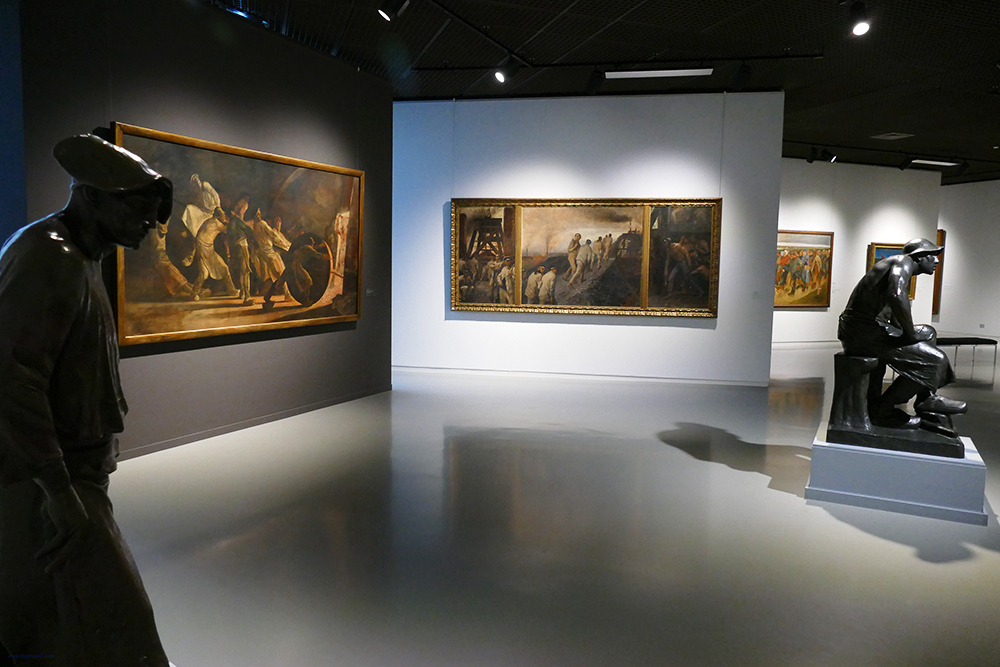

The museum is open from Tuesday to Friday between 10 a.m. and 5 p.m. and on weekends from 11 a.m. to 6 p.m. The general entrance fee is 10 €uros.
Another gem you definitely shouldn’t miss is the truly beautiful Musée des Instruments de Musique at the northern corner of Place Royale. While their collection of instruments is not exactly overwhelming, I still urge you to pay the restaurant on the top level a visit.

It’s another spot from where you have a grand panoramic view of Brussels – and here it even comes with some refreshments. Also, riding the old elevator is fun – and at moments even a bit exciting. Going back down, however, you should take the stairs so that you get to see this remarkable building.

If you only visit the café and not the exhibitions, entry is completely free. You just have to say at the entrance that you want to go to the restaurant. Belgian architect Paul Saintenoy designed this magnificent Art Nouveau building. It used to house a department store called Old England, and the old inscription is still on the front facade.

A Walk in the Park
As soon as you’ve had enough of majestic buildings and great art and just want to take a breather, all you have to do is cross the street at the ravishingly beautiful church Église Notre-Dame des Victoires au Sablon Cross and you find yourself in the picturesque Square du Petit Sablon. It is a charming, elegant garden and a true gem of 19th-century landscaping.

Architect Hendrik Beyaert designed the Square du Petit Sablon in 1890. The garden has symmetrical paths, manicured hedges, and a central fountain. Its iron fence is richly decorated and underlines the elegance of the garden. 48 bronze statues representing the medieval guilds of Brussels depict different professions and crafts, from blacksmiths to glassmakers.



The garden was built in honor of the Counts of Egmont and Horn. These two noblemen were executed for opposing Spanish rule over the Netherlands in 1568. Their death was a significant event in the lead-up to the Dutch Uprising. Today, statues of Egmont and Horn stand above the large fountain in the center of the square.
The square is accessible every day from 8.15 a.m. to 7.45 p.m.
…Children and Childish: On Comics
While other nations dismissed comics as trash, the French and Belgians recognized and recognized the cultural value of drawn storytelling very early on. Already in the middle of the 20th century, Belgian cartoonists developed unique and charismatic characters and an entire cosmos around each of them.
Whether it’s the adventurous Tim, the jumpy Marsupilami, the cowboy Lucky Luke, or the Smurfs: The entire world knows and loves these quirky Belgians.
And also the phenomenon of comic books for adults, like detective and crime novels, is a very Franco-Belgian thing.
Therefore, a visit to the Centre Belge de la Bande Dessinée, Brussels Comic Art Museum, is a must when visiting the city.

Also, don’t miss out on a visit to their gift shop.
Those already into comics will have the time of their lives – and probably spend a fortune in the very complete bookstore downstairs. Anyone who has not previously known what to do with comic books could have interesting encounters with a different area of culture, namely, a new form of literature.

However, don’t expect Disney World. Although there are a couple of large figurines, it’s not an amusement park, it’s a book center.

For instance, there is a large section where you can follow the individual steps on how a comic book is being created, from the idea through the storyboard to the drawing, coloring, and printing. Very interesting – and if this doesn’t make you appreciate Bandes Dessinées, then I don’t know what will.
Apart from the permanent exhibition, there are always a couple of special themed displays.
The Comic Art Museum is open from Tuesday to Sunday between 10 a.m. and 6 p.m. During the tourist high season in July and August, they open every day. The general entrance fee is 13 €uros.
More Bande Dessinée
While I can definitely recommend a visit to the Center Belge de la Bande Dessinée, I think the Museum of Original Figures, or MOOF for short, is avoidable unless you’re traveling with small children and it’s pouring rain.
Yes, there are more than 1,000 figurines shown mostly in vitrines – and that’s it. However, the Brussels Card includes the MOOF, so why not pay a quick visit – especially since it’s about three minutes from the Central Station. But paying the 10 €uros they normally charge….I don’t find it worth it.

Of course, Brussels is also a great place to shop for comic books and merchandise. I already mentioned the very complete bookstore they have at the Center Belge de la Bande Dessinée. Even if you don’t buy anything, just browsing through the variety of different editions is amazing – I think there is not one subject or historical character that those comic books don’t cover.

If you are like me and into Tintin and want him on your stationery, your tableware, your sheets, your bathrobe and towel as well as your umbrella, a visit to La Boutique Tintin will make you very, very happy.
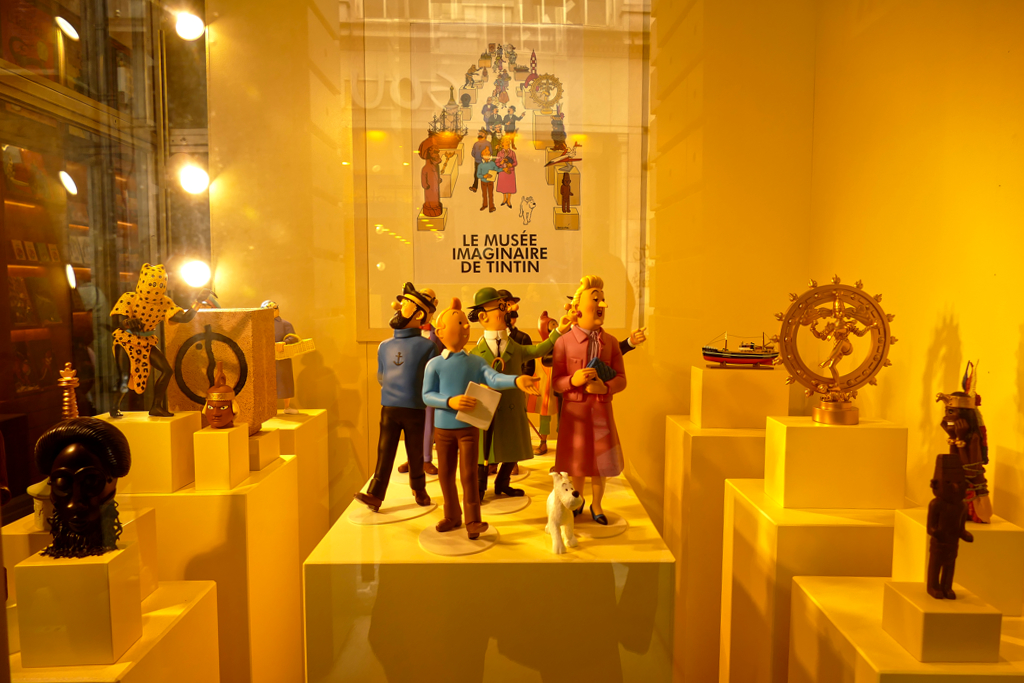
The store is open daily till 6 p.m., Sundays only till 5 p.m., and on Monday, they open only at noon.
Musée Art & Histoire
Another good museum that you can visit, especially with children, is the Musée Art & Histoire, the art and history museum. It’s like a small version of the British Museum in London, as it houses artifacts from all over the world. The most enchanting piece for me was, of course, a small figure from Peru. In the sixth Tintin volume called The Broken Ear, the plot revolves around this sculpture that was stolen from the museum. By the way, the volume, which is still captivatingly exciting today, was first published in 1935!
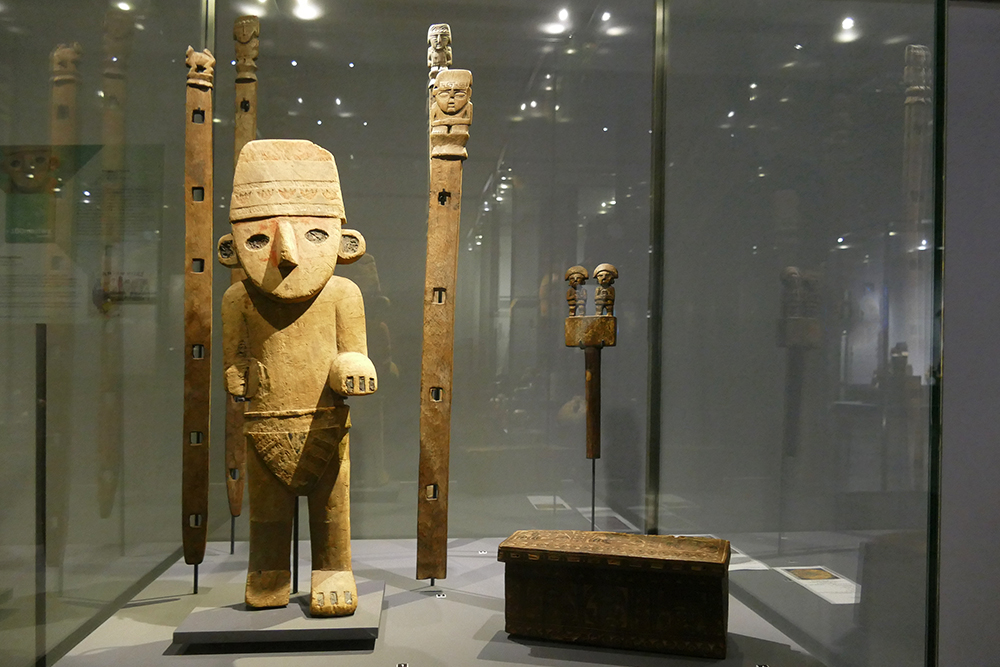
Also, the fact that they’ve had an exhibition on the comic book character Alix by Jacques Martin proves my point about how seriously comic book characters are taken. In fact, Alix, a Gallo-Roman hero, fits pretty well between the statues, vases, and other artifacts from the early classical Roman and Greek periods.
By the way, just like the French Asterix books, the characters and stories of Alix are also historically accurate and amazingly detailed. This is an aspect that makes Belgian and French comic books so fascinating and artistically valuable.
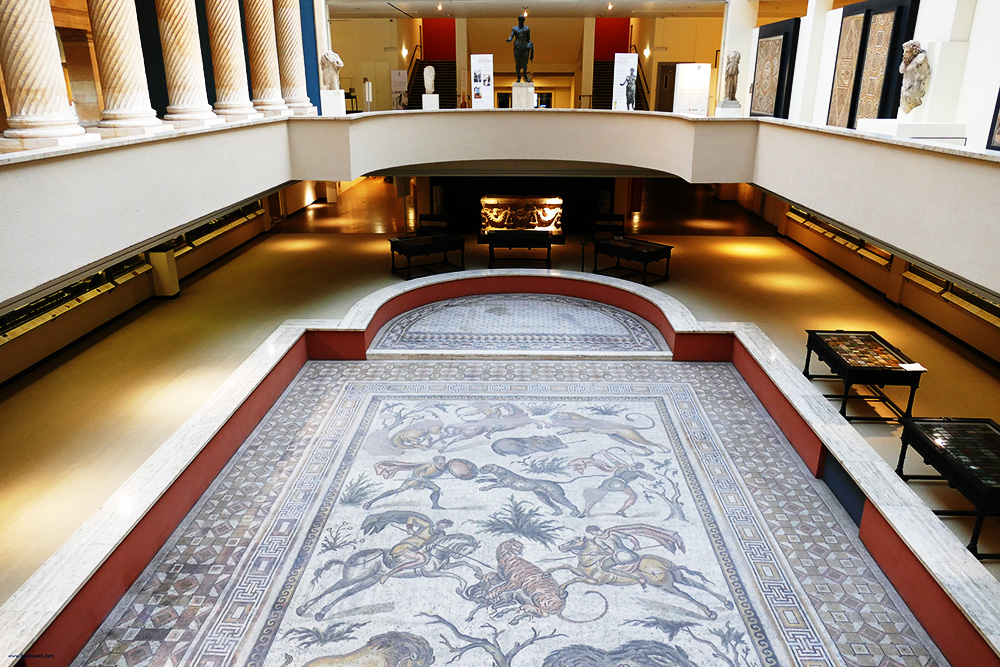
The Arcades du Cinquantenaire, a triumphal arch from 1905, houses the Art and History Museum in its southern wing. The structure also houses the Royal Museum of the Armed Forces and Military History, as well as the Autoworld. These are two subjects I simply couldn’t care less about, no matter how hard I try.
The Art and History Museum is open from Tuesday to Friday between 9.30 a.m. and 5 p.m. On weekends, they open only at 10 a.m. The general admission fee is 10 €uros.
World’s Most Famous Wee-er
Tintin is not the only famous little dude from Belgium. There is also the pretty quirky Manneken Pis, which translates to little man piss. Hieronymus Duquesnoy the Elder created the Manneken. It was then installed on top of the fountain in 1620. Since then, the dude has been practically wee-ing into the communal water reservoir.
The guy is 61 cm tall, and since it got stolen a couple of times, the original stands safe and sound at the Museum of the City of Brussels. The bronze sculpture you see at the corner of Rue de l’Etuve and Rue du Chêne is a version from 1965.

Several legends explain the origins of the statue. The most popular one is that during a siege of Brussels in the 14th century, a young boy saved the city by urinating on the burning fuse of explosives that enemies had placed at the city walls. His quick thinking prevented the city from being destroyed, and the citizens erected the statue in his honor.
Over the centuries, Manneken Pis has come to symbolize the rebellious and humorous spirit of Brussels.
Dressing Up
The guy is naked most of the time – yet, he doesn’t have to be: There is a number of outfits and costumes waiting for him just down the road at the GardeRobe MannekenPis, a museum that would turn every fashionista green with envy. Supposedly, this wardrobe houses 1000 elaborately crafted outfits.
As a matter of fact, all the little mannekens modeling the wardrobe are holding their pecker, which actually looks even creepier on a dressed boy than on a naked one. It’s also a bit disturbing that they disguised him as famous men, such as for instance Nelson Mandela.
The GardeRobe MannekenPis is open from Tuesday to Sunday from 10 a.m. to 5 p.m. and can be visited for an entrance fee of 5 €uros. However, there is a combined ticket for 10 €uros which also includes the Brussels City Museum. Also, both venues are included in the Brussels Card, just like basically all museums I’m introducing in this post.
Well, the Belgians seem to have a thing for urine: To balance things out, there is also a Jaenneke Pis, a statue of a girl squatting and relieving herself. Unlike the centuries-old Manneken Pis, Jaenneke Pis was created more recently in 1987 by Denis-Adrien Debouvrie, a local artist.

A dog by the name Zinneke Pis completes the trio. He lifts his leg against a pole, which is a sight I’m pretty used to, even in public.
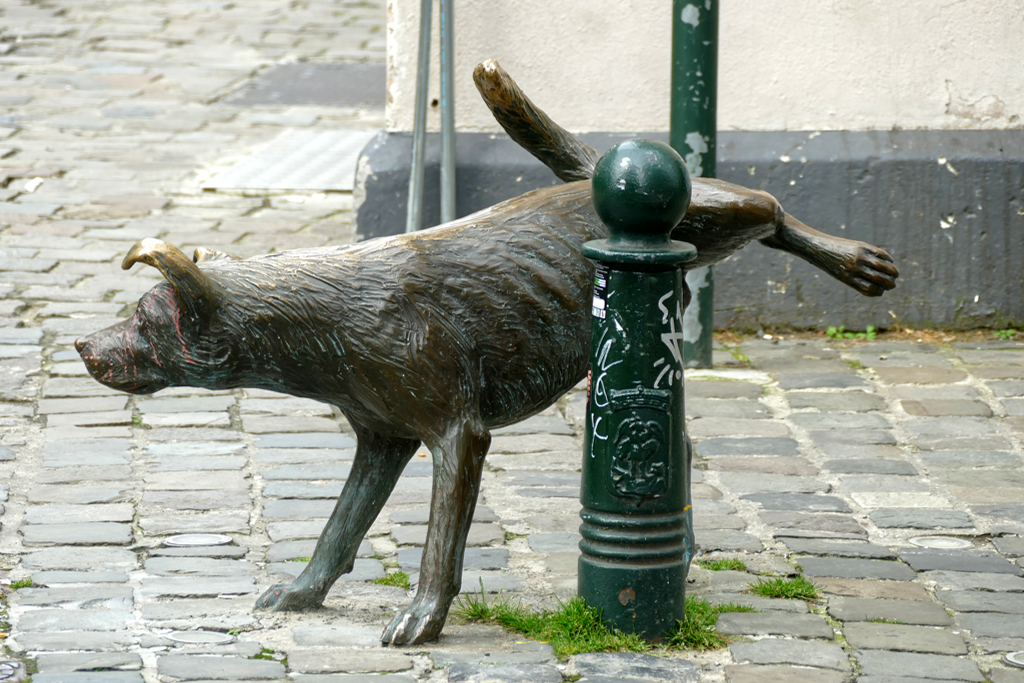
…Gourmands and Gourmets: On Food and Drinks
It’s a bit strange: when you order food in, do you ever opt for Belgian?
Is there a Belgian restaurant near you?
Do you even know a single Belgian restaurant?
I, for one, can answer all of these questions without hesitation.

And yet every visitor to Belgium goes crazy when it comes to food. Funny enough, local cuisine doesn’t offer anything particularly delicate even within Belgium. Yes, there are French fries, which are really good and mostly accompanied by something fried.

Only mussels – which are, of course, traditionally accompanied by French fries, what else – can perhaps be classified as fine Belgian cuisine.
So why is everyone in Belgium going crazy and raving about the food?
I think it’s because of the Belgian beer. No, I’m not saying that visitors gloss over the local cuisine. I just think that Belgium’s hearty, rather heavy food works very well as a base and accompaniment to beer.

Without beer, Belgian cuisine quickly becomes what it really is: relatively simple, meat-heavy, and filling food without much sophistication.

So, since you won’t be looking for a Belgian restaurant anywhere else in the world, go for it: enjoy the local cuisine while you’re there.
Cockaigne
Of course, my tongue-in-cheek remark that no visitor outside of Belgium craves Belgian cuisine only refers to the savory part. The case is completely different when it comes to Belgian sweets, especially waffles. Those come in two versions, and both are really exceptionally tasty. The Brussels waffle is traditionally rectangular with thin combs and large holes for sweet toppings. It is prepared with a liquid batter to obtain a light and crispy waffle. The Liège waffle, on the other hand, is thick and soft and consists of lots of sugar pearls that caramelize when baked. This gives the waffle a crisp and golden color.

And then, of course, there is Belgian chocolate. Belgium is proud of its chocolate tradition, and many of the products made here enjoy an excellent reputation worldwide. The high quality of Belgian chocolate is due to the use of high-quality cocoa beans and careful processing techniques. Belgian chocolate creations are produced in a wide variety of shapes, flavors, and qualities, obviously.
The Art of Chocolate
In addition to chocolate in bar or block form in various flavors, pralines with a variety of fillings such as ganache, nougat, marzipan, caramel, nuts, liqueurs, or fruits are particularly popular. A popular specialty is truffles. These small chocolate balls are often filled with creamy ganache and then rolled in cocoa powder, chocolate sprinkles, or nuts.

All of these delicacies make perfect souvenirs for family and friends back home. There are artisanal chocolateries where it is really worth investing a few €uros extra. However, for your everyday craving, the boxes they sell at supermarkets will definitely do.

While we’re on the subject of souvenirs: If you have the chance, try to get one of these special packs containing bottled beer with one of the corresponding glasses. You don’t have to get it at one of the specialty stores, just buy it at the next supermarket.
It’s a great gift to bring home with you – but unfortunately, only an option if you’re not flying and carrying hand luggage only.
…Hipsters and Hoodrats: On Streetart and Cool Neighborhoods.
Urban art in Brussels is a dynamic and integral part of the city’s cultural landscape. Known for its rich artistic heritage, Brussels has embraced street art as a powerful form of expression, turning its urban spaces into vibrant canvases. The city hosts a wide range of murals, graffiti, and installations that reflect its diverse and multicultural identity.
Neighborhoods like the Marolles, Saint-Gilles, and Molenbeek are particularly famous for their colorful street art scenes. However, urban art in Brussels not only beautifies the city but also sparks conversation, providing a platform for social and political commentary in a creative and accessible way.
Comic Book Route
Street art that literally everyone will enjoy is the murals of popular comic book characters. They are part of the so-called Comic Book Route. In this wonderful urban art project, Brussels unites the best of its iconic arts, namely comic books and murals. As I explained above, the importance of comics to the city is deep-rooted and diverse.

The so-called Parcours de Bandes dessinées was created in 1991 as part of a municipal initiative to beautify and culturally enhance the city. The idea was to celebrate Belgium’s rich comic tradition in public spaces and at the same time revitalize the districts by painting large areas of wall with comic motifs.

The first mural created as part of this project shows the character Broussaille, created by Frank Pé, and marked the starting point for the development of an entire comic route. Over the years, the course grew steadily and developed into an integral part of Brussels’ cultural heritage

Murals Everywhere
Apart from the murals celebrating popular comic book characters, there is also ‘regular’ street art, obviously. Like practically everywhere else in the world, the roots of contemporary street art in Brussels can be traced back to the 1980s, when graffiti and urban art movements emerged worldwide. Young artists inspired by hip-hop culture and New York’s graffiti scene began spray-painting walls and trains.

But since then, street art has become an important form of cultural expression and has been increasingly recognized as a legitimate art form. Local authorities and cultural institutions facilitated this development by launching urban art projects and collaborating with individual artists.
This post is a comprehensive guide to various sides of Brussels. Therefore, urban art remains just one of the manifold aspects. However, you can delve deeper into the topic in my posts The Best Murals Along Brussels’ Comic Book Route and Best Street Art in BRUSSELS. There you’ll find out more about the development of Brussels’ urban art as well as introductions to many artists and their works. Since the murals are spread throughout the city center as well as in some outskirts, it is quite a task to try to track them down. Therefore, I have also marked the locations of the featured works on a map.

Underground Art
Underground art – in this case, it’s not what you probably think. In Brussels, underground art actually takes place under the ground, namely in the 69 subway stations. For me, this is one of the most impressive cultural projects and a sign of how much Brussels is willing to support and promote art and artists. The When Art Takes the Metro project transforms the city’s subway system into a living gallery.

The project began back in the 1970s as part of an effort to integrate art into public spaces. A mix of renowned Belgian and international artists ensured a diverse representation of artistic voices. Their artworks range from sculptures and mosaics to murals and contemporary installations.
Many stations feature art that reflects the history, culture, or character of the neighborhood, making each station a unique experience. When Art Takes the Metro symbolizes the integration of culture into everyday life. It makes art accessible to everyone, even those who do not visit traditional galleries or museums. Therefore, the project has become a major attraction, attracting both locals and tourists.

Over the decades, around 90 unique art installations have been created throughout the Brussels metro network. This makes the Metro one of the largest public art collections in Europe!

Of course, with a day ticket and a little patience, you can visit them all.
For inspiration – and orientation – you might wanna check where to find which work beforehand. Therefore, here is a link to the wonderful catalog L’art à Bruxelles passe aussi par le métro.
Contemporary Art
Obviously, there are also indoorsy exhibitions of modern and sometimes quirky art! One of my favorite museums of modern art is the MIMA – Millennium Iconoclast Museum of Art, located in the vibrant Molenbeek-Saint-Jean neighborhood.

Installed in a former brewery, they don’t have a permanent collection, but show temporary exhibitions of different visual arts. Once you visit, don’t miss out on their rooftop terrace on the 5th floor. From there, you have a grand view of the entire neighborhood.

Since there is no permanent collection, you ought to check their website before visiting what’s on.
The MIMA is open from Wednesday to Friday between 10 a.m. and 6 p.m. and on weekends from 11 a.m. to 7 p.m. The entrance fee is 13.50 €uros. Note that since they don’t have a permanent collection, they are closed between exhibitions.
Another inspiring venue is the CENTRALE for Contemporary Art.

A former power plant in the heart of the city, on the Place Sainte-Catherine, houses now the CENTRALE for Contemporary Art. It is the most important center for contemporary art in Brussels.
It offers space for confirmed and emerging artists from both Brussels and the international art scene. Many of the exhibitions are multidisciplinary. Since its opening in 2006, CENTRALE has been not only an exhibition hall, but also a hub for encounters and debates between artists, collectors, connoisseurs, and art lovers.
You can visit the CENTRALE for Contemporary Art from Wednesday to Sunday between 10.30 a.m. and 6 p.m. for an admission fee of 10 €uros.
Finally, another intriguing venue for shows of contemporary art is the WIELS, which is a bit off the beaten track in the southwest of Brussels. This gallery opened in 2007, like the MIMA, in a former brewery. Already, the building as such, designed in the 1930s by Adrien Blomme, is an impressive example of modernist industrial architecture.

Besides showing contemporary art, the WIELS granted residency to over 130 artists. Also, the building’s terrace on the 5th floor offers an amazing panoramic view of the city. And the best part is that access is free!
Nevertheless, if you want to visit the galleries of the WIELS Contemporary Art Centre, you can do so from Tuesday to Sunday between 11 a.m. and 6 p.m. for an admission fee of 10 €uros.
…Parliamentarians and Royalists: On the EU Quarter and the Belgian Royals
When I was a child, there was still the European Economic Community, founded in 1957 by Belgium, France, Italy, Luxembourg, the Netherlands, and the Federal Republic of Germany. This community was the first step towards the wonderful project of a united Europe. Eventually, more European countries joined the union.
Then, in 1992, the Maastricht Treaty was signed, which broadened the task fields of what then was called the European Community. Eventually, in 2009, the European Union replaced the European Community.
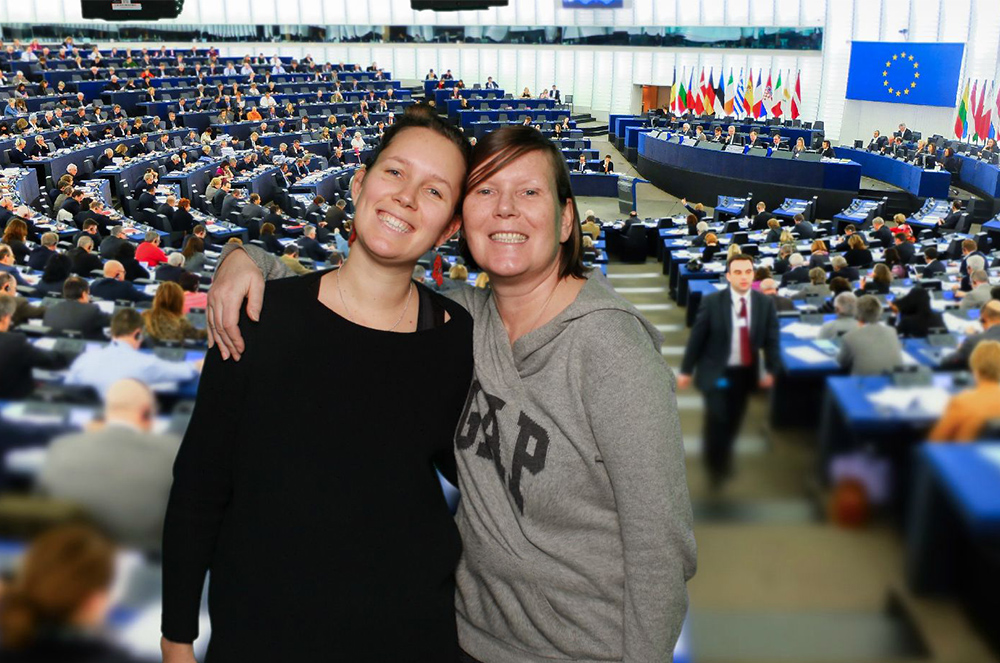
This Union – I love the unity that this term indicates – consists of 27 states, home to almost 450 million people who speak in 24 different languages. Also, in some countries, they don’t speak just one, but two or three. Given these figures and the fact that we all come from different cultural backgrounds, it’s understandable that juggling individual interests isn’t always easy. Therefore, some decisions, rules, and laws seem at times a bit irrational and absurd. However, this unity is a wonderful concept with lots of advantages. After all, it grants free movement of people, goods, services, and capital within the internal market.
Visiting the European Parliament
The European Parliament is in Strasbourg and Brussels, and the European Commission is in Luxembourg. The Parliament has 751 members and….wait a minute, you know what? At the Parlamentarium, they will tell you all this and much more in a very informative yet fun and entertaining way.
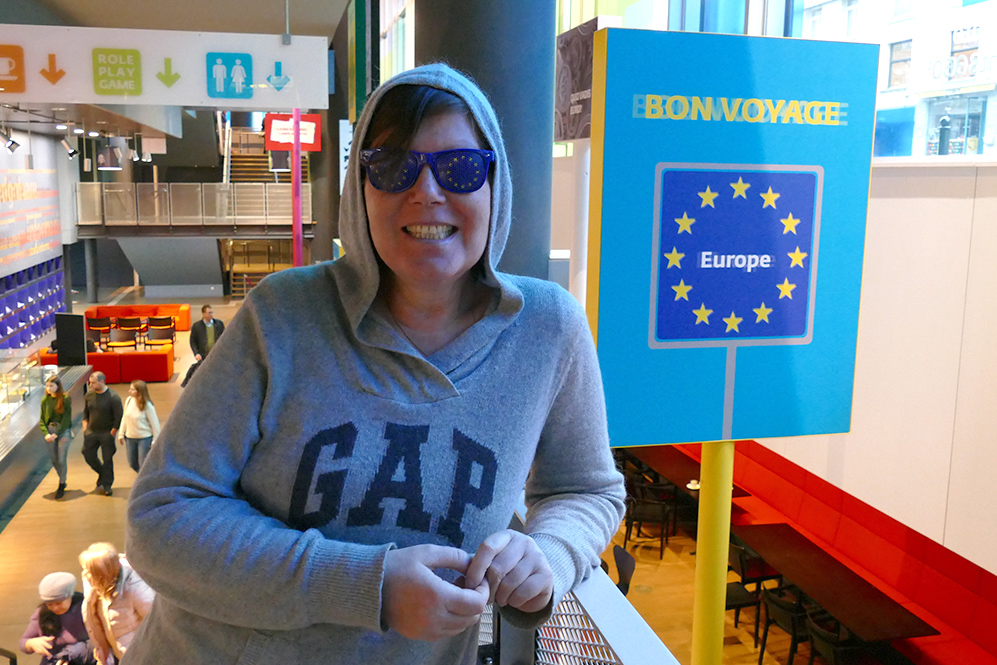
The Parlamentarium is the European Parliament’s visitors’ center that opened its doors to the public in 2011. It’s open daily till 6 p.m. – Mondays only from 1 p.m., though – and it’s totally free of charge. Plus, they give you an audio guide – you can pick one of the official languages spoken in the European Union.

They bring Europe’s past from WWII until now alive. I hope that after a visit, you too, just like me, will become a big fan of this unionizing idea.
Belgian Royal Family
While Belgium is some sort of the European Union’s midwife, they still are a federal hereditary monarchy. Only that nobody seems to know these Royals. Even when I’m reading these trashy magazines at the dentist’s, there are only all those Spanish, the Dutch, and the Scandinavian bunch. Oh, and the English, of course. No sight of King Philippe, Queen Mathilde, or one of their four daughters.

It’s a pretty young monarchy, though. Since 1815, there was the United Kingdom of the Netherlands. In 1830, the southern part detached under the name Belgium for political, religious, and linguistic reasons.
In 1831, German-born King Leopold I came to power. He was followed in 1865 by his second-born son Leopold II, a sucker for terrible colonialist ideas. He founded and became the personal owner of the Freestate of Congo in Central Africa. Het let abuse, torture, and exploit the local population in the caoutchouc production and ivory hunt. If his personal belongings, aka African adults and children, weren’t efficient enough, he let chop off one of their hands. That should teach them a lesson….
According to the US historian Adam Hochschild, during Leopold’s questionable reign, about ten million Africans fell victim to the King’s monstrosities.
There is a highly recommendable book by Mark Twain, King Leopold’s Soliloquy*, that deals with that era.
Belgium seems to do much better in the European, parliamentarian field.
…Surrealists and Humanists: On René Magritte and Erasmus’ Heritage
The cultural movement called Surrealism emerged from Dadaism in the early 1920s and spread primarily in France and Belgium.

made between 1953 and 1954.
And while for the French Surrealism was not an artistic idea but a radical revolutionary movement, the most famous star in the field of Surrealist visual art became undoubtedly the Belgian René Magritte.
Born in 1898 in Lessine, Magritte studied at the Académie Royale des Beaux-Arts in Brussels. Although his studies did not inspire him on an artistic level, this profound professional training allowed him to earn a living even during difficult times. In 1922, he married Georgette Berger, whom he had known since his teenage years.
It’s sort of comforting that in contrast to other artists like Vincent van Gogh, Magritte was already successful while he was still alive.

He had exhibitions and travelled the world and went along with his wife. So I think that when he died in 1967 at the age of 68 from pancreatic cancer, he probably looked back in contentment.
A Surreal Real Legend
Oh, why I’m telling you all that? Because I’ve skipped the Magritte Museum in the first chapter of this post where I’m dealing with the Royal Museums of Fine Arts of Belgium. The Magritte Museum is part of that venue and included in the ticket. But even if it wasn’t, this exhibition of beautiful, ingenious paintings in bright colors is a must-see.
You’ll find information on opening hours and admission fees above in the section about the Royal Museums of Fine Arts.
There is furthermore the house where the artist lived and worked between 1930 and 1954. This venue is also included in the Brussels Card. However, it’s over half an hour by public transport to get there. If you have lots of time or are Magritte’s biggest fan under the sun, be my – or respectively: his – guest.
For a general entrance fee of 10 €uros, you can visit the house where the artist lived and worked for 24 years from Wednesday to Friday between 1 p.m. and 6 p.m.
On weekends, they open already at 10 a.m. However, they rquire an online reservation.
Erasmus And the European Spirit
More or less the same distance, hence, about a half an hour ride from the city center, is the way to the Erasmus House. It got its name since the great humanist, theologian, and philosopher lived here in 1521. To this date, you can trace his stay. However, the house itself was built already in 1458 in a late Gothic style and used for a school, governed by Pieter Wijchmans who eventually hosted his buddy Erasmus.

If you have the time, it’s worth the visit since the building, the furnishing, and the paintings are magnificent. There is also Erasmus’ garden, but since I visit around Christmas, I cannot tell you much about it.

The house in the district of Anderlecht is open from Tuesday to Sunday from 10 a.m. to 6 p.m. and the entrance fee is as little as 3 €uros.
Once you’re in the area, you should also visit the Church of Saint Peter and Saint Guidon as well as the adjacent beguinage, installed in 1252.

It’s a small, walled architectural complex that was created to house the beguines, religious women who lived in the community without taking vows or retiring from the world.
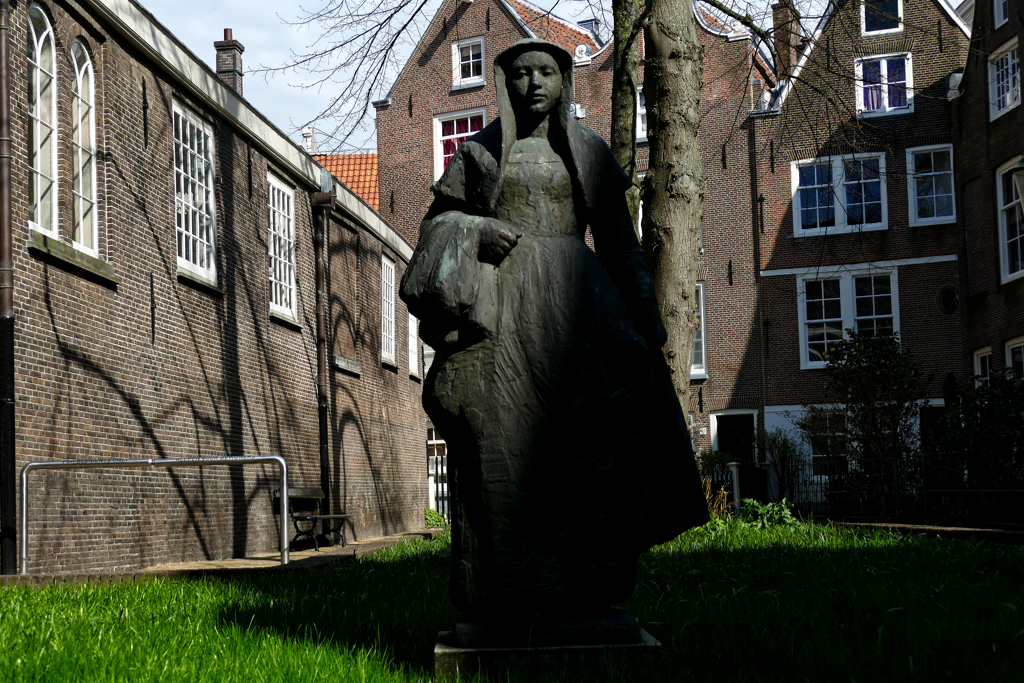
Yet, it is not a convent. This form of community was particularly popular in the Low Countries, hence, the Netherlands and Belgium. I’ve introduced a Beguinage Hofje also in my post Four Days in AMSTERDAM – Unique Things To See on a Long Weekend.
…Wandering and Wondering: On Greeneries and a World-Famous Structure
The Atomium is one of the most famous modernist buildings in the world and Brussels’ most important landmark. Engineer André Waterkeyn and architects André and Jean Polak created it as the centerpiece of the 1958 Brussels World Exhibition. It stands on the Heysel Plateau in the Laeken district and is a tribute to scientific progress. At 102 meters high, it is one of the tallest structures in Belgium.

Nine stainless steel balls with a diameter of 18 meters are connected in the form of a unit cell. This represents an iron crystal magnified 165 billion times. There are stairs and escalators in the steel tubes that connect the spheres. There is even an elevator in the central, vertical tube. This means that six of the nine balls can be entered. They contain exhibition halls and other public spaces. In the top sphere, there is a restaurant with panoramic views of Brussels.
The general entrance fee is 16 €uros. There are combination tickets with the planetarium for 17 €uros and with the Mini-Europa Park for 32,20 €uros. The Atomium is open daily from 10 a.m. until 6 p.m. To avoid long queues, I recommend purchasing an entry ticket in advance*.
There’s More
But not only the Atomium itself, but also the surrounding area is attractive to visitors for several reasons.

Not only does the Atomium itself offer a breathtaking view over the city, but the surrounding areas also offer many great viewing points and photo opportunities.

The former Expo site, which is located directly behind the Atomium, is still the setting of many international exhibitions, concerts, and, of course, trade fairs. Nearby is the Design Museum Brussels, which exhibits stylish handicrafts as well as modern art.
Especially if you are traveling with children, you should definitely not miss a visit to the Mini-Europe Park. Here you will find miniature models of famous European sights that have been recreated in great detail, allowing you to travel throughout the continent in just a few hours.
Phew, that was quite a lot to see, wasn’t it? Well, it’s a good thing that the Atomium is located right next to the Parc de Laeken, a spacious greenery that invites you to relax and take a walk. There’s even a lake and plenty of areas to hang out and enjoy nature.
Practical Information
How to Get There
Belgium is a rather small country and its central location makes it quickly accessible from many countries and regions.
From many European cities, you’ll get there by train in just a couple of hours max. Also, bus travel has become extremely popular in Europe. You can travel between many cities by clean, comfortable buses. Usually, they leave a couple of times per day and often at incredibly cheap prices.
The bus station is right next to the train station Bruxelles-Nord, a business neighborhood that becomes a bit abandoned at night. Therefore, you should know where you’re going and not venture around too much.
However, since Brussels is not only geographically but also politically Europe’s epicenter, there are tons of flights at attractive prices.
The airport is located about 12 km northeast of the city.
The fastest way to get downtown is by one of the regional or suburban trains for only 9 €uro. You can buy the ticket from one of the vending machines and the ride is an incredible 11 minutes!
If you are able to spend a little more time, you can get downtown for just 2.50 €uros by taking either the STIB bus line 12 or bus line 272, which runs from the Noord train station to the airport. However, the latter is part of a different bus company, hence, you cannot use your STIB ticket if you have one. Yet, the fare is also only 2.50 €uros, so the small extra expense should be manageable.
How to Get Around
Public transport is very good everywhere in Europe. And public transport in Brussels is actually great. I would even say that the city has the best public transport network in the entire continent. There is a subway, there are trams, and buses and everything is clean and reliable. It is also easy for foreigners and first-time visitors to find their way around. Timetables and maps are posted at all stops. Google Maps also shows you the best connection between two spots.
Basically, contactless payment is the most convenient way of buying a ticket. Simply hold your bank card, smartphone, or smartwatch to the reader in the vehicles. A one-way trip costs €uro 2.10, the maximum daily price is €uro 7.50.
Remember that you still need to check in even if you have a physical ticket, whether for a single trip or a multiple ticket. In this case, you have to hold the ticket to another reader on the bus or tram. The turnstiles at the metro stations work for both ticket types. Don’t forget that at many metro stations you have to tap your ticket again to leave the station.

Suppose you have a ticket for the Société des Transports Intercommunaux de Bruxelles network, STIB for short – this includes all metro lines, trams, and most bus lines, keep in mind that you cannot use it on buses operated by the company DeLijn! Within Brussels, these buses usually have an R before the number. Also, line 272, which runs from the Noord train station to the airport, is not part of the STIB. However, the trip only costs €uro 2.50, so the small extra expense should be manageable.
Walking’N’Cycling
Basically, the center of Brussels is so small that you can cross it from one end to the other in about half an hour. However, city trips always involve a lot of walking, so you’re especially happy at the end of a long day when you can catch a bus or tram, even if it’s just two or three stops.
Of course, you can also easily explore Brussels by bike. Several companies are renting out regular bicycles as well as e-bikes. However, I would only recommend this for tours outside the city center, as many streets and alleys are packed with people. Also, consider that Brussels can be quite hilly in places, making cycling challenging.
Visiting Organized
Although I’m an avid solo-travelling woman, I sometimes like to join organized tours. This way, I get extended info about a place and it’s fun to visit landmarks in the company of like-minded fellow travellers.
In a busy city like Brussels, booking tickets’n’tour well ahead can be crucial. Especially during high season, pre-booking online will guarantee your spot at the activity of your choice*:
Where to Stay
Brussels is not only a tourist city, but also the center of European politics. As a result, the demand for adequate sleeping space is high and the supply of hotel beds is large. There are a number of recommended hotels in the medium-priced range, especially around the Rogier station.
But if you want something really special and very Belgian, then rent a room in the Yooma Urban Lodge*. Here, spending a night in your favorite comic book is not just a dream as the hotel is decorated entirely in the style of a Belgian comic. From the hallways and, of course, the rooms to the restaurant and bar, you are immersed in fascinating decor. Choose from 60 suites based on no less than 31 comic series. And that’s by far not all since there are arcades, reading rooms, cinemas, and even a shop, where everything revolves around comics and your favorite heroes.
Also, not far from the Grand Place, the Rocco Forte Hotel Amigo* has an official Tintin suite whose decoration immerses you in Hergé’s work. This is truly a unique opportunity to have an unforgettable stay in the comic capital!
However, if your enthusiasm for comics doesn’t go so far that you can’t refrain from it even at night, then you’ll definitely find accommodation that suits your needs and budget on Expedia*:
Where to Eat
I have already described in the chapter above what the typical dishes that tourists wash down with large quantities of beer are.
I would like to point out a very practical and pleasant way to eat out in Brussels. Several food courts in the city have crucial advantages not only for travelers. Like other food courts, there are stalls with foods from different countries in a large hall. From Asian to Mexican to – correct: Belgian. This means everyone can choose what they feel like, yet, you can still sit at the table together. Yes, you are of course familiar with the concept from shopping malls. But the ambiance in the food courts that I present below is very different from the plastic decor of your local mall.
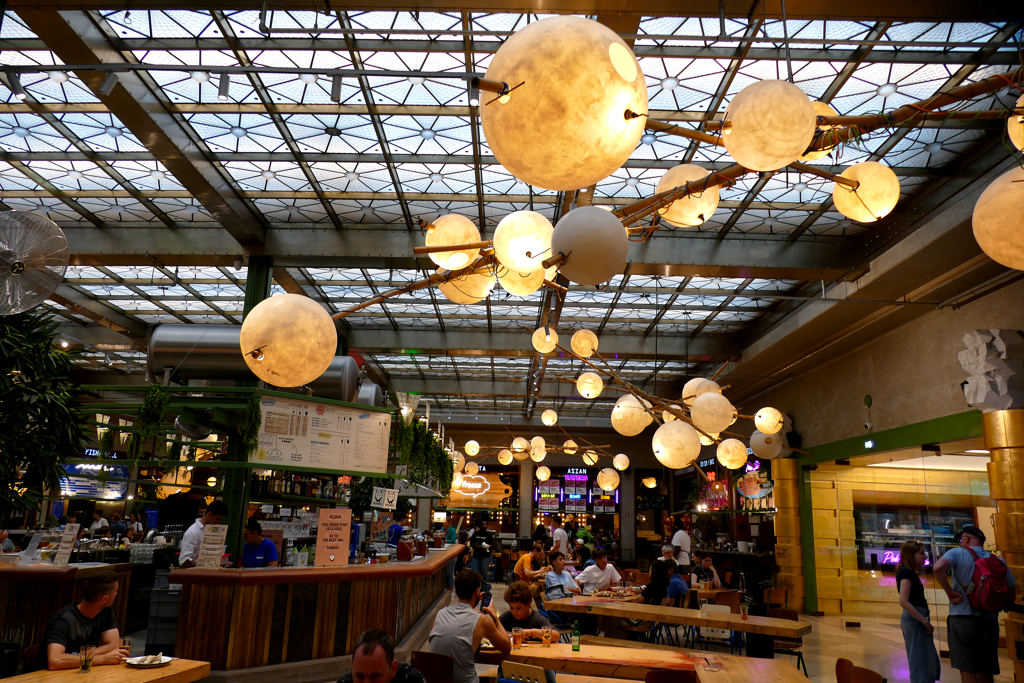
One of the most beautiful and centrally located food courts is the Wolf Sharing Food Market. Here you can embark on a culinary journey around the world. There is Vietnamese, Indian, Japanese, Italian, and much more. The whole thing is crowned by an on-site microbrewery that brews local craft beers.

Wolf Sharing Food Market is open every day from noon until 10.30 p.m.
Halles Saint-Géry
Another centrally located venue is Halles Saint-Géry. It has fewer food choices than the Wolf, but on the other hand, it is a fascinating location with a rich history and an intriguing present-day role. Originally built in 1881 as a covered market, this neo-Renaissance style building was designed by architect Adolphe Vanderheggen and stands on the site of the former Church of Saint-Géry, which dates back to the 6th century.
After serving as a bustling market hall for many years, the building fell into disrepair and was nearly demolished in the mid-20th century. However, it was saved due to its architectural value and historical importance, and in the 1990s, it was transformed into a cultural center. Today, the Halles Saint-Géry serves as a vibrant cultural hub. It hosts exhibitions, concerts, and various events that highlight Brussels’ urban culture, heritage, and contemporary art.

The building’s interior is a mix of its original iron framework with modern installations. Beneath the Halles Saint-Géry lies an archaeological site with the remnants of the old Saint-Géry church. This way, visitors can explore the city’s deepest history while enjoying contemporary cultural events above ground.
Halles Saint-Géry is open every day from 10 a.m. until midnight.
Gare Maritime
Last but not least, there is the impressive Gare Maritime in Brussels’ Tour & Taxis neighborhood west of the Canal Bruxelles-Charleroi. It is a truly remarkable example of architectural transformation and urban regeneration. Completed in 1907, this massive train station was once the largest freight station in all of Europe! It is a stunning example of early 20th-century industrial architecture. Its expansive iron and glass structure is reminiscent of the grandeur of Parisian train stations like Gare d’Orsay, with a total floor area of over 40,000 square meters.

After decades of disuse, the Gare Maritime was revitalized and reopened in 2020 as a sustainable urban development. The renovation project was led by the architecture firm Neutelings Riedijk and is considered a model of green architecture. The building now houses offices, shops, and event spaces, all designed with sustainability in mind. One of the most intriguing aspects of the Gare Maritime is its transformation into an urban oasis.
The interior now includes gardens and walking paths, creating a green, serene environment in the heart of the city. This innovative use of space blurs the lines between indoors and outdoors, offering a unique experience for visitors as it is not just a commercial space but also a cultural and social hub. It hosts exhibitions, cultural events, and markets, making it a vibrant community center. Obviously, there is also a food court offering a rather small choice of international cuisines as well as a huge beer bar.
The Gare Maritime is open from Monday to Thursday between 11 a.m. and 10.30 p.m., Fridays and Saturdays, they are closing only at 1 a.m., and on Sundays, they are open from 10 a.m. to 8.30 p.m.
Cash, Cards, and Deals
In May 1998, the heads of the member states of the European Union agreed – nota bene in Brussels – on the implementation of the €uro.
Until now, 20 European countries replaced their former local currency with the €uro starting in 2002. Obviously, Belgium is one of them. The exchange rate is 1 US$ = 0.84 EUR as of July 2025. However, you can check today’s conversion rate on this page.
Credit cards are far more accepted as cash. Also, keep in mind that there are not as many ATMs as in other European countries. Therefore, as you finally come across an ATM, there might be a pretty long queue.
Savings
There is so much to see in Brussels, and almost none of the venues is free of charge. Therefore, I recommend you obtain a Brussels Card preferably online* before you even get to the city. This way, you can activate it already at the airport and take bus 12 to the city center free of charge, provided you have chosen the option that includes free use of public transport.
With the Brussels Card*, you have free admission to 49 museums and discounts on tourist attractions, guided tours, shops, restaurants, bars, and clubs. With your card, you also get a very informative booklet. Then, you can add more options such as a Hop on Hop off bus respectively a travel card for public transport.
Note that there are no special rates for kids or students. However, in general, kids and students under 26 years of age get a discount at museums and other venues. Kids under six years of age have free access.
| 24 hours | 48 hours | 72 hours | |
| Brussels Card | 32 €uros | 44 €uros | 50 €uros |
| + Public Transport | 8 €uros | 15 €uros | 19 €uros |
| + Hop on Hop off | 27 €uros | 32 €uros | 36 €uros |
Language
As I wrote in the introduction, Belgium has three official languages. For about 60 percent of the Belgian population, the mother tongue is Dutch, and for about 40 percent French. Only a small minority of about 74.000 people, living on the country’s eastern border, speak German. However, all three languages show dialect features. They differ a bit from the versions that are spoken elsewhere.
Brussels as the country’s capital is officially bilingual, but as a matter of fact, French clearly wins by the nose.
Being the central spot of the continent and a touristy destination, practically everyone speaks English. Albeit, it was pretty clear that many people working in the service sectors are much nicer when you speak French.
Since it’s always nice to be able to say at least some pleasantries in the local language, you might want to pick up some words online with Babbel. The first lesson, which already covers all the hellos and thank yous, is even free. You’ll find also Dutch and German courses there.
Map
On this map, you’ll find all the wonderful places I’m introducing in this post.
Clicking on the slider symbol at the top left or the full-screen icon at the top right will display the whole map including the legend.
Yes, this post proves that there is a lot to see in Brussels. Nevertheless, there are incredibly beautiful little cities in Belgium worth exploring. And to learn how you can visit them on day trips from Brussels, please go to my post BRUSSELS’n’BEYOND: Day Trips to Antwerp, Bruges, and Ghent.
Pinnable Pictures
If you choose to pin this post for later, please make sure to use one of these pictures:






Note: I’m regularly completing, editing, and updating this post – last in July 2025.
Did You Enjoy This Post? Then You Might Like Also These:
BORDEAUX: Best Street Art on the Right Bank of the Garonne
Mallorca’s East Coast Bay by Bay: Cala Santanyí, Cala Llombards, Cala Figuera
Two Days in MARSEILLE – What Not to Miss in the Belly of France
How to See the Highlights of LANZAROTE in Two Days
We’ll Always Have Büdelsdorf – bye:myself at the NordArt 2017
24 hours in LISBON
24 hours in PARIS
Guide to RONDA – a White Gem in the Skies
* Disclaimer: I appreciate that Visit Brussels supported both of my blogger trips by supplying me with a 72-hour Brussels Card including a Travel Card. However, all opinions on these services are mine and weren’t by any means influenced by my cooperation partner.
There are affiliate links in this article. By purchasing items through my affiliate links at no extra cost to you, I will receive a small commission. This helps me to run this site.

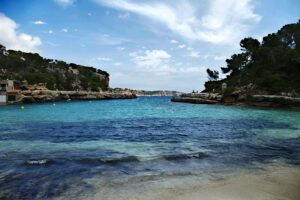
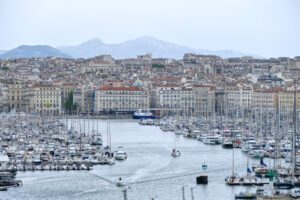





Great guide. I recently visited Brussels and had a great time. The city was full of charming neighborhoods, delicious food, and interesting museums. I particularly enjoyed visiting the Atomium and the European Parliament, and of course trying some of the famous Belgian chocolate and beer.
It’s a very cool city. I want to go back asap for more street art and the art project in the subway stations.
lovely post!
Thank you, glad you like it 🙂
Greetings from Florida! I’m bored at work so I decided to check
out your blog on my iphone during lunch break. I enjoy the info you
present here and can’t wait to take a look when I get home.
I’m amazed at how fast your blog loaded on my cell phone ..
Anyhow, amazing blog!
As much as I have explored Europe, I can’t believe I haven’t yet made it to Belgium. I really need to go, I know I will love the architecture. I wish to go to Brussels but also Ghent and Antwerp and I can see from your posts that I am absolutely going to fall in love with the food there. I must bring back some chocolates and waffles for my friends too!
I have visited Brussels one time and I found it as such a beautiful city. With so many historical buildings and character to the city, it is surely one of my favourites. I did hope though that I had more time when I was there as it has so many things to do. I walked around the old city centre and saw the palace.
There are so many old buildings there, but I think visiting The Grand Plance and Maison du Roi will be enough for me. The Comic Book Trail looks fun and even if you don’t like comic, a stop at Le Boutique Tintin is a must, in my opinion. And of course, finding The Manneken all over Brussels and in different material will be fun!
As Brussels is still on my bucket list, it will be much nicer and easier to visit with your guide. So many practical tips and detailed information! For sure I want to photograph and visit the City Museum, Royal Museums of Fine Arts of Belgium, Brussels Comic Book Museum, and more. I love Moules Frites!
Belgium has a vibrant art culture and beautiful architecture and museums. It was tempting to the the Belgian chocolate stores. Thank you for sharing!
Yes, the food is definitely tempting there 😉
Our 3 days in Brussels didn’t reveal as many Wee-ers or architecture but we got to taste the important stuff!
Hahaha – got you 😀
Luxembourg has been afflicted with a boring and staid reputation – but there’s much more to its dynamic and diverse capital city than meets the eye.
Well, I don’t know about that – it has rather a richie-rich reputation as far as I’m concerned 😉
Brussels is one of my favorite cities in Europe and I have visited it numerous times! Great post about the highlights of this beautiful town. I am also a big Tintin fan – there is a Herge Museum in Belgium, you can reach from Brussels in a half-day trip. They have most of the original drawings! And the tourist information in Brussels also has a Tintin walk booklet!
I have heard of Brussel, but not fully what the city has and what we can do there. Thanks for the detailed information!
Brussels looks beautiful! All of the architecture and art lining the streets I am sure was amazing to see in person based off of your photos. I have never been before, but hoping I get the chance to visit one day!
This is indeed a very informative post about Brussels. Definitely a great read for everyone especially for the first-timers as everything is almost readily available here!
Sadly we have not yet made it to Belgium. But when we do, we will want to do a long visit. We would definitely want to explore all the great architecture. I love cities like this that are easy to explore on foot. Definitely a great selection of museums and art galleries to explore. With seafood galore and chocolate too I know we will eat well. And hubby would definitely be checking out the beer!
Beautiful place. All these travel posts makes me want to visit the entire world.
This is awesome, love to watch art and things like these. Great tips for people who will go there. Will consider these when going there as well.
I liked it in Brussels, wonderful place to stay with great and cheap food and nice museums. I was crazy about TinTin when I was little, visiting the museum made me positively crazy
LOL the chocolate Manneken Pis 🙂 It should p.. hot chocolate
That’s genius! You’re right – he would make a wonderful chocolate fountain 😀 😀 😀
This is a great and fun guide to Brussels! I’ve been many years ago, but another visit is clearly needed. I’m glad you were honest about the rude staff, it’s so unnecessary! The manneken are wonderful and so iconic. I’m drooling over the waffles!
I’d say it’s one of those cities you cannot get to know entirely on just one visit.
Brussels is definitely a great place for travellers who love arts and design. I couldn’t help admiring those many old buildings. I’m excited to visit Brussels soon, maybe in 4years time after I got my new passport.
Wow those are amazing photos, I would love to visit there someday.
Lots of history and culture in Brussels – so much to see and do!
This was an awesome post! When my daughter and I went to Paris I was enthralled with the architecture! I think I would love it here too!!! Great pics!
Brussels is such a beautiful city! I can’t wait to return there one day.
I assume tourism will be picking up very soon 🙂
Brussels is a place I first heard and read about when I was very little. I got so intrigued with it. I’d love to visit and enjoy some breaded sausage! Thanks for sharing about it.
Yap, the food is far from being healthy, yet so yummy 😉
This is so cool, it’s a place of my type that I would like to adventure to haha. Hopefully, one day I can visit it.
I’ve always wanted to visit Europe! Brussels is definitely on my bucket list. It looks like such a nice place to visit.
Yes, not only is it politically the center, it’s also a very inspiring and beautiful city 🙂
Oh I would absolutely love to visit. I really want to see the entire world
I’ve never been to Brussels or that part of Europe before, but it looks like there’s a lot to do! They definitely do seem to have a thing for peeing statues, that’s so strange!!
Such an amazing guide to Brussels! I want to go there and get waffles and chocolate and fries! haha
One thing…If you refer to the language as “Dutch”, you are going to get some dirty looks. It is Flemish. It can be mostly understood by Dutch speakers, but there are quite a lot of differences. This is a point of some contention among the Flemish. As is the fact that pretty much everyone in Flanders speaks Flemish and French (and English), but practically nobody in Wallonia speaks Flemish. Brussels is in Flanders, by the way.
Thanks for your valuable corrections 🙂
Belgium looks incredible. We would love to visit someday. Thanks for the great guide on Brusssels for everyone.
I hope you’ll make it there soon 🙂
Art and Architecture! Two of my favorite things. Being from America I’m always mesmerized by the gorgeous European architecture when I’m there. We have so few masterpieces like the ones in Europe. Thank you for sharing about this wonderful city.
Yes, I also enjoy very much Europe’s ancient treasures 😀
You can definitely see your skills in the work you write. The world hopes for even more passionate writers like you who aren’t afraid to say how they believe. Always follow your heart.
Brussels surprised me with the combination of modern and old architecture!
Alrighty then! When I do plan to go to Brussels, this will come in handy. Bookmarking for my next year travels
Fantastic architecture and such a thorough overview. This will be very useful
Brussels in an amazing place. It's the best European city that I've ever visited!
I love your complete guide to Belgium. This is a nice reference in the future.
Wow. Next month I am going there. Your details will surely help. The church and the art gallery are amazing. I am dying to try their chocolates .
Didn't know so much about Belgium. Well-written and good amount of information.
I heard so many good things about Brussels particularly their buildings. A friend in Brussels invited me to visit him (showed me pictures as well). I kind of regret not visiting last May when I visited Europe. These are pretty shots btw! Well, done!
The photos of the architecture is awesome. You got some great shots. I would love to visit Brussels.
Brussels seems like a cool place to visit. What are so local foods we should try if anyone goes to Brussels?
I've been to Brussels before, but I haven't been there to quite the extent that you've been there. I'm definitely going to take these tips for my next time. Thanks!
This place looks so vibrant colorful and nice ..I really loved the wonderful architecture!!
Love it.Such a treasure trove of architecture, art, culture, and history.
hey!! I’ve been to Brussels about 4 years ago and your blogpost would’ve been great for me back then. It’s so informative, interesting and genuinely a free help for those traveling first time.
Xx
This looks like a stunning place to visit just for the architect and the art alone! The photos you shared are gorgeous, I'd love to visit here one day.
Great post! Brussels seems amazing. I really hope to be able to visit some day. It is a beautiful city.
Wow! Your pictures have stimulated my desire to explore the beauty of Brussels. It has all the ways to magnetize tourists around the world.
Thank you. How can I explain immigration service as everyone is from a different country and different visa are required. However, I've published WORLDS MOST COMPLETE TRAVEL INFO where you can find visa requirements for every country no matter from which country you are: httpss://byemyselftravels.blogspot.com/2018/05/CompleteTravelInformation.html
Belgium is an enchanting country with many historic places, delicious chocolates and crunchy waffles but getting a visa is a very difficult.
I have been absent for a while, but now I remember why I used to love this site. Thank you, I will try and check back more frequently. How frequently you update your web site?
httpss://www.shorelineamphitheatretickets.info
Shoreline Amphitheatre tickets
Brussels looks beautiful place. The architecture of Brussels looks gorgeous!
The artwork looks incredible. I'll definitely be adding this to my list! Haha! The Tony Blair mural is hilarious!
Thanks for sharing!
I love the European architecture and amazing gardens in Brussels. Your blog post made it one of my dream destinations.
Brussels is a treasure trove of architecture, art, culture, and history. I have been planning to visit Belgium for some time now. Plans don't seem to materialize. Sigh!
Wow, I loved the fact that Belgium is very welcoming and its central location in Europe makes it more interesting. I am impressed by its art museums, street art and architecture of this place. Thanks for sharing all useful details of Belgium.
My first ever trip without my family was to Brussels! This post brought back so many good memories for me!
Oh yes. You bring good memories of Brussels. I loved chocolates and waffles. According to you, there is so much to explore… I think I got stuck with beer.
Not sure if my first comment came through. Trying again annon. Would love to revisit Brussels again as its been over 10 years since I have been.
Wow the street art you discovered is fab. I love seeing how cities have defined themselves with art. Jay (Birds of a Feather Press – For writers with an independent Spirit)
Interesting read!
Such a comprehensive guide, thanks for sharing! I have never been to Belgium, but would love to visit one day. The architecture of Brussels looks gorgeous!
I really love the Neo-Classical style! I tend to agree with you, you can really find something for everybody!
What a lovely Brussels guide. I visited a couple of years ago but only for a couple of days. Would love to visit again someday
Brussels looks like such a beautiful city. I might have to add it to my itinerary when I go to Europe this summer!
I’m actually going to Brussels next week, lucky me! Your tips will all come in handy!